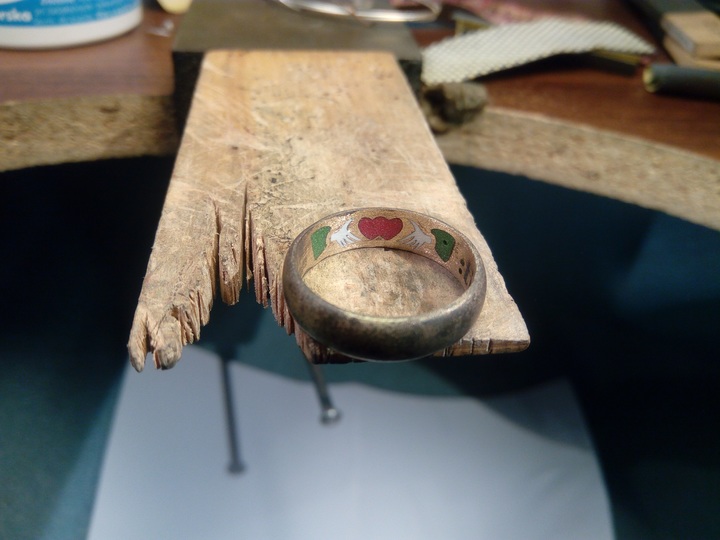Notifications

Here's another gold and enamel question. Can you fuse enamel to gold filled material?
and can you fuse gold to all forms of gold, pink gold, karat 14, etc.?
thank you,
Mary Rose
Hi Mary
I am not sure about gold filled material but I think this material is not good for enamelling because of the high heat in kiln or torch firing.
You can enamel (nearly) any type of gold but the question is how you need prepare the surface and what the color will look like. The best info you can get in book Enameling on precious metals-https://www.amazon.com/Enamelling-Precious-Metals-Jeanne-Werge-Hartley/dp/1847972055
Problem is the white gold, you need to know what is used in the alloy. Normal 14K yellow gold (not the casting alloy that contains silicone) you can prepare using depletion gilding and when you have fine gold surface you can enamel it. Sometimes casted jewellery have already the fine gold surface after casting so you need just make 2-3x the depletion gilding in sulphuric acid. Everytime clean the surface in baking soda solution, tap water then in ultrasonic cleaner and rinse with demineralized water!! If any acid will stay on the surface it will turn black (spot) when you heat the piece.
18K yellow gold or green(gold and silver only, no copper) is best for enamelling.
Rudolf
Thank you Rudolf, for your great information. From the above, I understand that you can depletion gild normal 14K yellow gold in sulphuric acid a certain amount of times, then each time, clean the surface in baking soda solution, and tap water, then use ultrasonic cleaner and rinse with demineralized water.
I want to make sure I understand the process completely. How many times approximately do you need to put in sulphuric acid and then continue with the cleaning? Also, do you have to use the ultrasonic cleaner, or can something else be substituted?
Thank you so much,
Mary
Hi Mary
If your piece is fabricated not casted so it´s less porous you can skip the ultrasonic cleaner. This is better for casted pieces, if you don´t have one just rinse well and enough under running warm tap water.
With 18K gold you will have the fine gold surface after approx 5-8 times, 14 karat need more but depend how strong acid you use how long you will let the piece stay in the acid. When you heat the piece the surface cannot turned black. You need pickle until the surface will stay "gold yellow".
Trish is right, if you can change the design to use 14K gold as a base and just make silver base enamel with 24K gold foil it is better. I know sometimes this is not possible. Check the gold wedding rings in my albums. They were 3D printed, casted from 14K gold and then enamelled. I did the depletion gilding around 10 times sometimes the rings were 24hours in sulphuric acid. After the enamelling the not enamelled part turned in kiln brown,light black or how to call the oxidized color. So I put the rings back to acid for approx 10 minutes not to ruin the leaded enamels and when the oxides dissapeared I continued with enameling.
Hope this helps![]()
Rudolf
Hi Rudolf, I have a short question and that is: each time you depletion gild you put it in sulphuric acid, then EACH time clean the surface in baking soda solution and tap water, etc. You don't just depletion gild and put it in sulphuric acid, then depletion gild and sulphuric acid, etc., and at the end, put it in baking soda solution, and etc.
Thank you for your information,
Mary
I have experimented with firing over gold plated over fine silver. What I have found is that the thickness of the fill is important. If it is thin then it dissolves into the silver/enamel and disappears. A thicker layer will stay put longer. The number of firings can effect its dispersion.